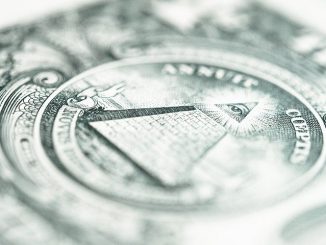 No need to remind dear reader that the Fed is certainly under attack from all sides these days. Ben Bernanke recently gave testimony in the House Financial Services committee, explaining how the Fed had no idea about what was going on at Lehman’s; see Fed Had Limited Oversight on Lehman.
No need to remind dear reader that the Fed is certainly under attack from all sides these days. Ben Bernanke recently gave testimony in the House Financial Services committee, explaining how the Fed had no idea about what was going on at Lehman’s; see Fed Had Limited Oversight on Lehman.
What is going on here? Is the Fed really this clueless? Can we really trust the Fed in its proposed supervisory role, given its pathetic record in this regard?
Well, I’m not sure. But let me share with you a few things that I do know (or think I know).
THE FED AND BANKING SUPERVISION
[1] The U.S. has a primary regulator system for the nation’s 8000+ commercial banks and thrifts; the primary regulator has the key authority for the regulation of the bank in question.[2] Before the crisis (as of Jan 2007), the Fed had primary regulator responsibility for about 12% of all banks (14% by assets).
In other words: more than 85% of banks and bank assets had non-Fed primary regulators.
THE FED AND THE FINANCIAL LANDSCAPE
[1] Banks are only one part of the financial landscape. As the crisis began, 20 firms accounted for about 80% of S&P financial sector assets in the U.S.[2] About 1/3 of this total was in banks; about 2/3 of this total was in non-bank financial firms, including government-sponsored-agencies (Fannie Mae and Freddie Mac), investment banks, insurance companies, and thrifts.
[3] Non-bank financial firms turned out to the most troubled entities in the crisis.
The Fed had no supervisory authority over these entities, including
- Investment banks, like Goldman Sachs and Bear Stearns
- Insurance companies, like Prudential and AIG
- Financial hybrids, like GE Capital and GMAC
And so, whether by accident or design, the Fed in fact had authority over only a very small segment of the financial market. Nevertheless, when the crisis hit, the Fed was widely expected to act quickly in its role as lender-of-last-resort. Many of the Fed’s decisions, subject to great criticism today, involved “bailing out” non-bank firms like Bear Stearns and AIG — firms for which the Fed had no supervisory authority.
THINK ABOUT IT
Imagine putting yourself in this situation. You are legally prohibited from supervising the vast majority of financial sector actors. You are not privy to any of their financial information. But when a crisis hits a group of these firms, you are asked to supply emergency loans…today…not next week, or one month from now. You are told, and you may even suspect it a possibility, that the entire financial system may collapse if you do not provide this emergency lending. So, what do you do?
Personally, I think I would not have done it (though this is easy to say from my office chair). But the Fed did it. Can you really blame them? And the lending had to be extended to agencies not even under the Fed’s supervision. Are we to be surprised if “mistakes” were made? Who is to blame for all this? The Fed?
Make no mistake. The Fed, like any institution, should be subject to criticism and review. At the same time, any such criticism should be fair and balanced (especially if one expects enlightened legislation to emerge from the impending Dodd Bill).
- Bulenox: Get 45% to 91% OFF ... Use Discount Code: UNO
- Risk Our Money Not Yours | Get 50% to 90% OFF ... Use Discount Code: MMBVBKSM
Disclaimer: This page contains affiliate links. If you choose to make a purchase after clicking a link, we may receive a commission at no additional cost to you. Thank you for your support!




Leave a Reply